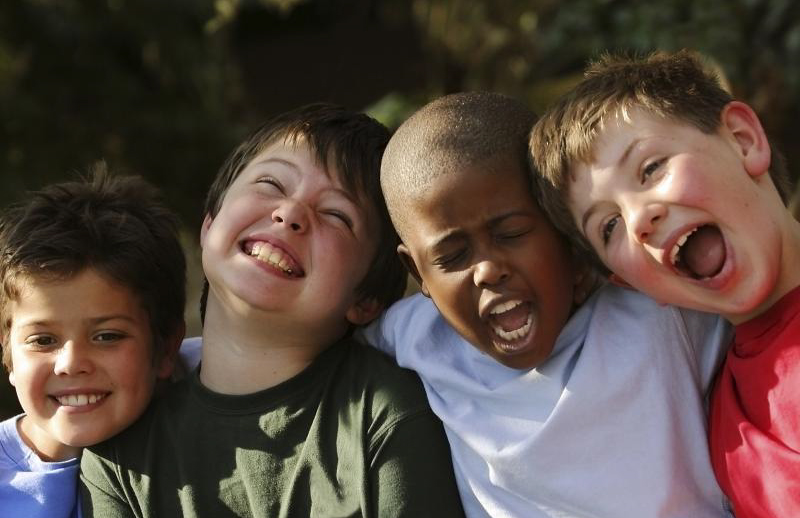
The Wisconsin Risk and Reach Project
Race and Ethnicity
All children deserve to grow and thrive free of risks to their well-being. However, poor economic, educational, and health outcomes do not afflict all Wisconsin people and places equally. The risks to children's healthy development is strongly connected to their race and ethnicity, the places where they live, and a host of other factors.
Due to historical and contemporary inequities, outcomes are highly racialized. Because of this, as well as continued segregation, many of the county-level risk outcomes shown in the mapping tool reflect the underlying demographic makeup and related inequitable outcomes in Wisconsin counties. Inequities also exist by other factors, for example in the instance of child care access, children living in rural areas, majority white regions, are disadvantaged in terms of proximity to local resources. More often, however, the risk factors we examined are more problematic for children of color. For instance, "overall risk" — the single score calculated for each county, representing the cumulative risk level relative to other Wisconsin counties — is highest for Menominee County, where 93% of children under 18 are Native American (compared with 1% statewide) and Milwaukee County (where 33% of children under 18 are Black, compared with 8% statewide). The counties that have the lowest overall risk scores (Washington, Kewaunee, Calumet, Waukesha, and St. Croix) have larger proportions of white children.
Concentrations of risks and gaps in services are detrimental to Wisconsin children's long-term health and well-being. When children from all races, ethnicities, and geographic locations get a healthy start, our whole state benefits.
Data Limitations
For most Wisconsin Counties, program participation data disaggregated by race and ethnicity is either unreliable, subject to privacy considerations, or non-existent. Because of this limitation, we are not able to assess racial disproportionately in reach to eligible children for most programs at the county scale. More consistent and standardized methods for programmatic collection of participant race data and methods for ensuring confidentiality will need to be in place to fully assess racial disparities in program reach. If such an assessment is to happen, it should also be paired with qualitative information and in-depth, thoughtful analysis of results.
Several of the risk indicators, such as standardized test score results and child maltreatment used in this analysis, are available and reliably cross-tabulated by race and ethnicity at the statewide level. Those analyses have been the subject of numerous other reports and publications, where they are presented alongside their complex social context. Quantitative data that displays racial disparities is most valuable with adequate contextual information and proposed strategies for addressing their root causes.
Programs Administered by Tribal Nations
Programs and services, in some instances, are run by a tribal nation. In child welfare, there are cases that are managed under their exclusive jurisdiction. Due to tribal sovereignty, those data may not be reflected in the data summaries in the Risk and Reach assessment. The project team endeavored to incorporate tribal program data into the county summaries when the tribal nation administered a program under a contract with the state agency (Wisconsin FoodShare), federal program data was made available (Early Head Start and Head Start), or the tribal nation provided a state agency with direct access to their data (Family Foundations Home Visiting).
The following is a partial list of Tribal programs and some detail about the number of children served, where we have information:
- Family Foundations Home Visiting: Participants of programs run by a tribal nation under a contract with the Wisconsin Department of Family and Children are counted in their county of residence. According to the 2020 Maternal, Infant, and Early Childhood Home Visiting (MIECHV) Home Visiting Needs Assessment Update, an estimated 245 families in Wisconsin were served by a tribal home visiting program.
- Wisconsin Shares Child Care Subsidy Program: Menominee tribal program participants are included in the Menominee County geographic area. Except for the Menominee Tribe counts, tribal children served by Tribes are not included in the county aggregate data. Children not counted in the county data include 33 children served by a Tribe, 26 of whom were served by the Oneida Nation.
- Wisconsin FoodShare: Tribal run programs exist, and participants are counted in their county of residence in the Risk and Reach assessment.
- 4-Year-Old Kindergarten (4K): Tribal programs exist, but students in tribal schools are not included in the county counts.
- Head Start: Tribal Head Start programs exist and are counted in their county of residence in the Risk and Reach assessment.
- Early Head Start: Tribal Early Head Start programs exist and are counted in their county of residence in the Risk and Reach assessment.

